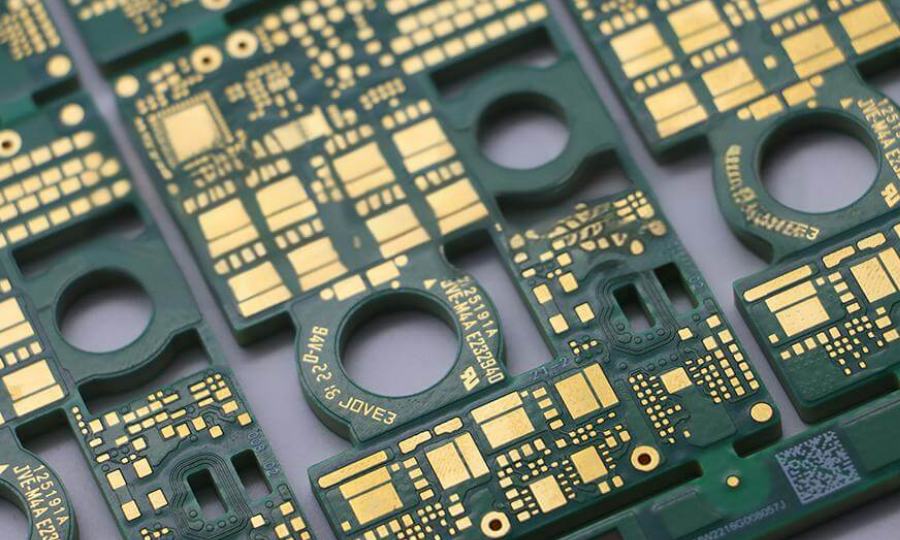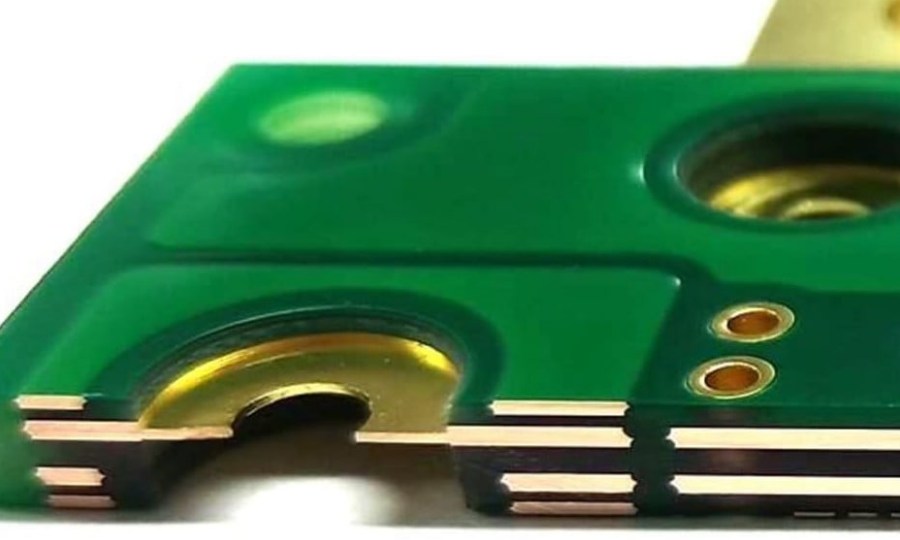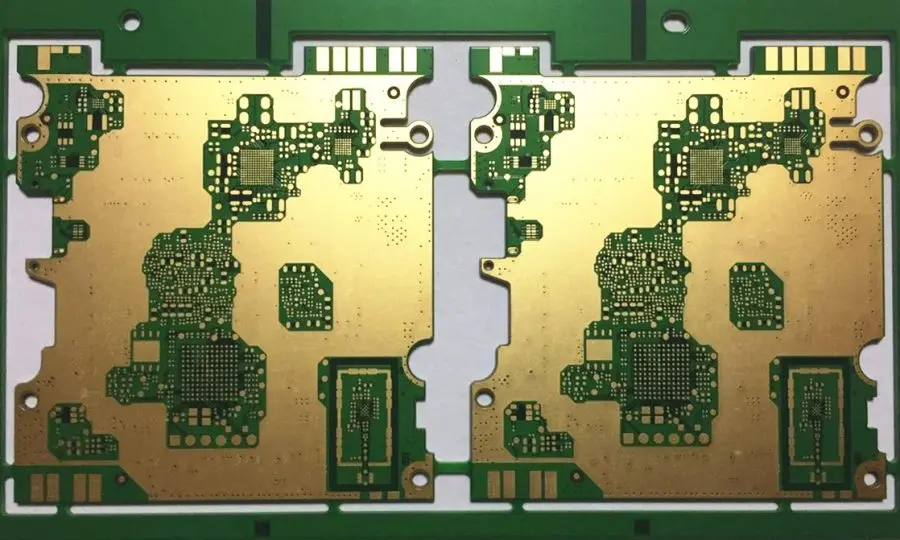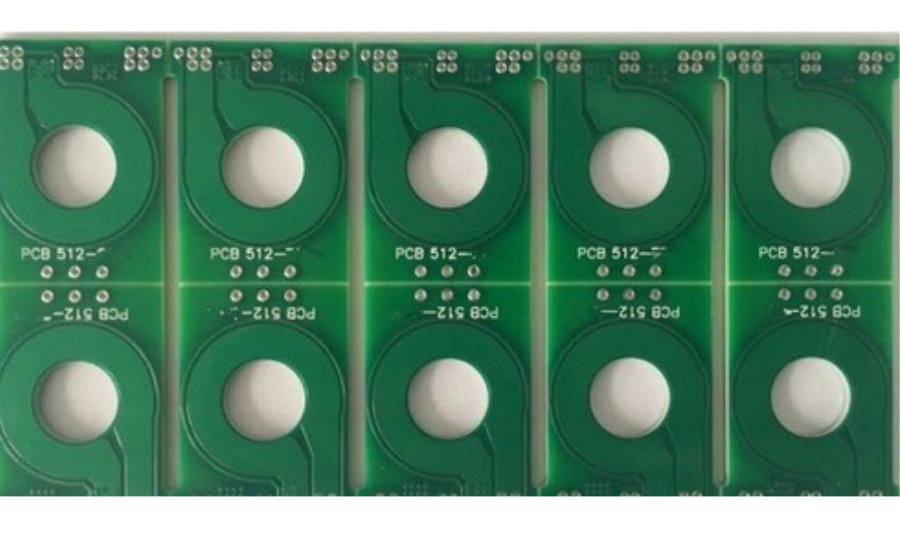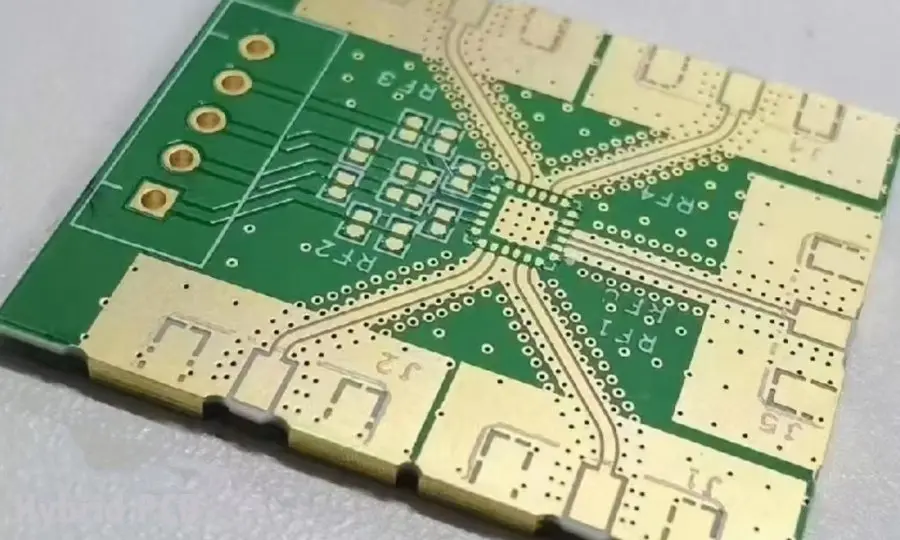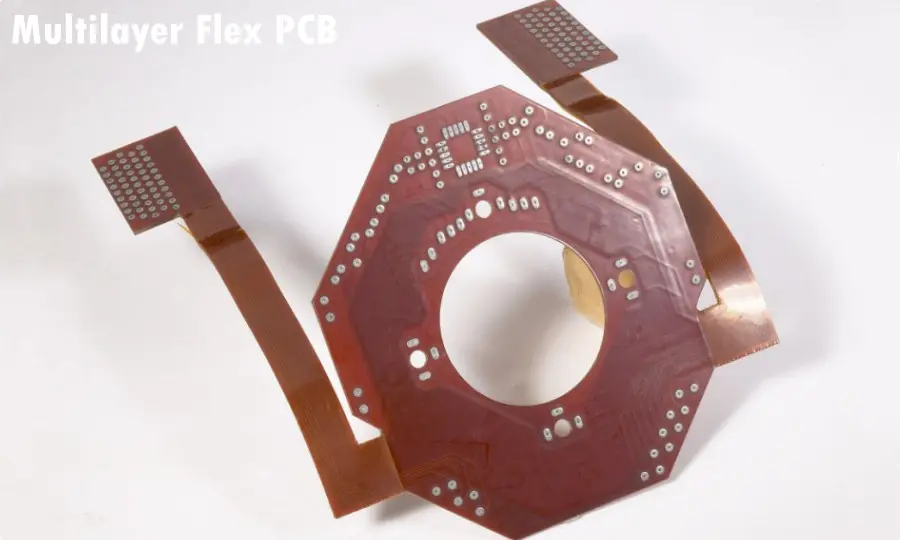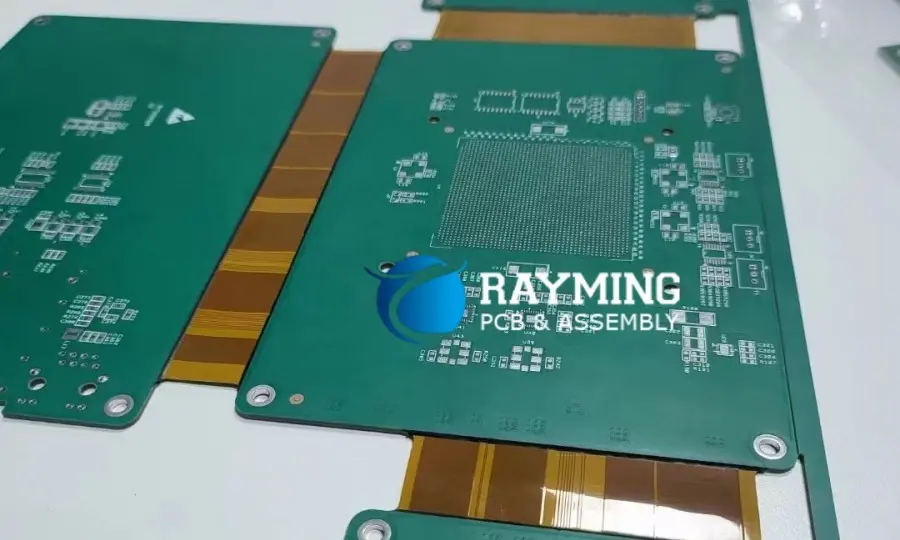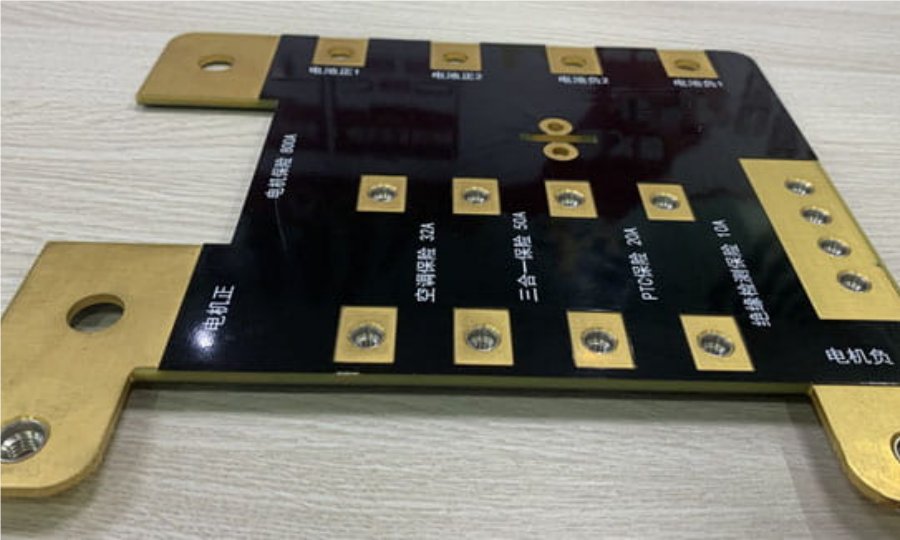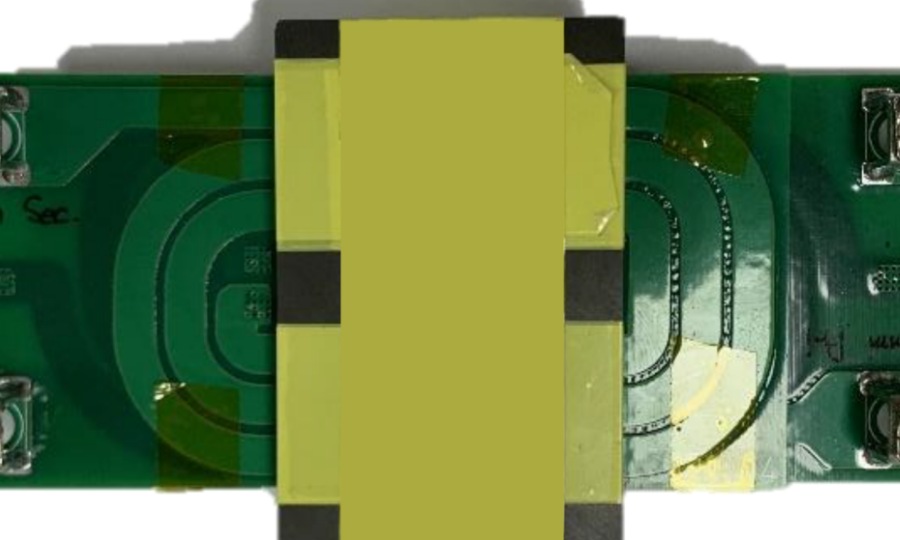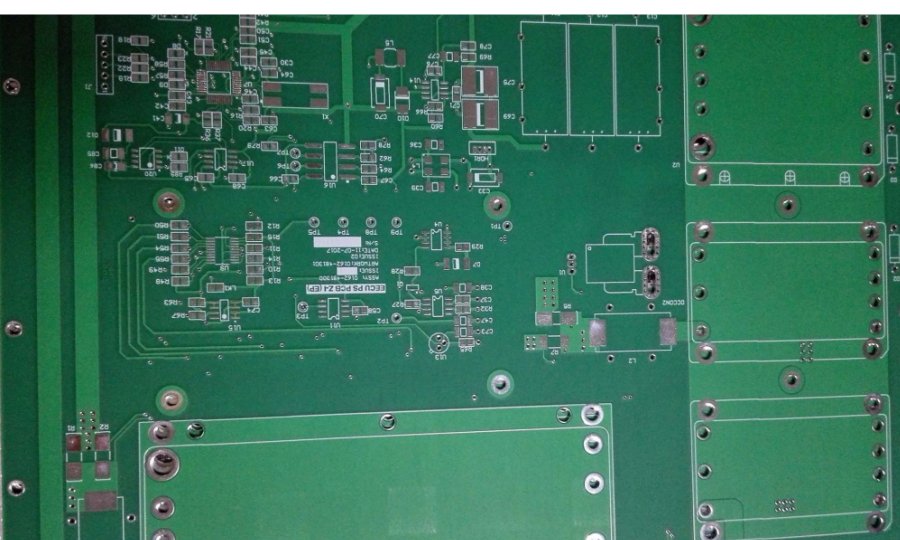Heavy Copper PCB: Complete Guide to Applications, Benefits & Design
Rayming specializes in heavy copper PCB manufacturing, supporting copper weights up to 20 oz. Our experienced team excels in solder mask printing and maintains stringent quality controls to ensure superior performance in extreme copper PCB applications.
What is a Heavy Copper PCB?
A heavy copper PCB is a specialized printed circuit board featuring copper layers significantly thicker than standard PCBs. While conventional PCBs typically use copper weights ranging from 0.5 oz to 3 oz per square foot (17.5μm to 105μm), heavy copper PCBs are characterized by copper thicknesses of 3 oz/ft² or greater, with some applications requiring up to 20 oz/ft² (700μm) or even extreme copper weights reaching 200 oz/ft².
Copper Weight Classifications
| PCB Type | Copper Weight | Thickness | Typical Applications |
|---|---|---|---|
| Standard PCB | 0.5-3 oz/ft² | 17.5-105μm | Consumer electronics, basic circuits |
| Heavy Copper PCB | 3-20 oz/ft² | 105-700μm | Power electronics, automotive, industrial |
| Extreme Copper PCB | 20-200 oz/ft² | 700-7000μm | High-power military, aerospace systems |
The copper weight measurement represents the weight of copper that would cover one square foot of the PCB surface, making it a standard industry metric for specifying copper thickness across different PCB types.
Heavy Copper PCB We Served
Heavy Copper PCB vs Standard PCB
Understanding the fundamental differences between heavy copper and standard PCBs is crucial for making informed design decisions.
Current Carrying Capacity
The most significant advantage of heavy copper PCBs lies in their superior current-carrying capacity:
- Standard PCB (1 oz copper): Typically handles 10-30A depending on trace width
- Heavy Copper PCB (4 oz copper): Can safely carry 50-100A per layer
- Heavy Copper PCB (10 oz copper): Supports 100-500A current loads
Current Calculation Example: For a 5mm wide trace with a 20°C temperature rise:
- 1 oz copper: ~30A maximum current
- 4 oz copper: ~80A maximum current
- 10 oz copper: ~150A maximum current
Thermal Performance
Heavy copper PCBs excel in thermal management due to copper’s exceptional thermal conductivity (401 W/m·K):
- Heat dissipation improvement: 30-50% better than standard PCBs
- Hot spot reduction: 40-60% decrease in localized heating
- Component temperature reduction: 15-20°C lower operating temperatures
- Thermal resistance: Significantly reduced through thick copper planes
Mechanical Strength
The increased copper thickness provides enhanced mechanical properties:
- Durability: 20%+ lower failure rates in harsh environments
- Vibration resistance: Superior performance in high-vibration applications
- Connector reinforcement: Stronger pad adhesion and via integrity
- Thermal cycling endurance: Better resistance to expansion/contraction cycles
Key Benefits and Advantages
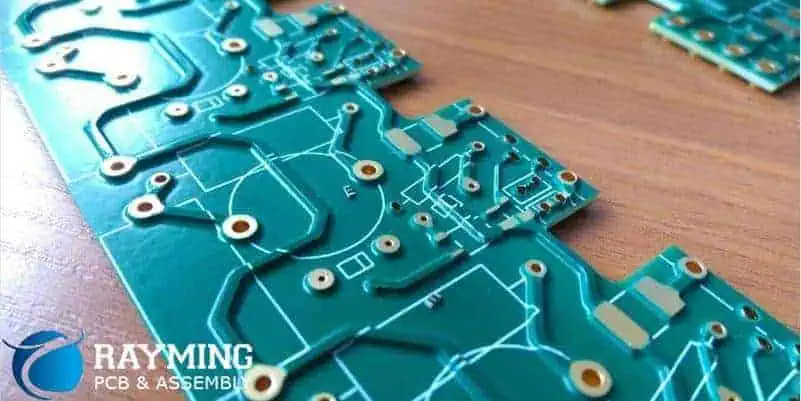
1. Superior Current Handling
Heavy copper PCBs can handle continuous high-current loads without the voltage drops and heating issues common in standard PCBs. This capability is essential for:
- Power supply circuits requiring 100+ amp capacity
- Motor drive applications with peak currents exceeding 200A
- Battery management systems in electric vehicles
- High-power LED lighting systems
2. Enhanced Thermal Management
The thick copper layers act as integrated heat spreaders, eliminating the need for external thermal management solutions in many applications:
- Built-in heat sinking: Copper planes distribute heat across the entire board
- Reduced hot spots: Even temperature distribution prevents component failure
- Lower operating temperatures: Extended component lifespan and improved reliability
- Simplified cooling: Reduced dependency on fans and heat sinks
3. Space and Weight Optimization
Heavy copper technology enables more compact designs by:
- Layer count reduction: Single heavy copper layer replaces multiple standard layers
- Component integration: High-power and control circuits on the same board
- Footprint minimization: 60% space reduction in power management systems
- Weight savings: Despite thicker copper, overall system weight often decreases
4. Improved Signal Integrity
For high-frequency applications, heavy copper provides:
- Lower impedance: Reduced signal loss and improved transmission
- Minimized crosstalk: Better isolation between signal paths
- Enhanced EMI performance: Copper planes provide superior shielding
- Consistent performance: More stable electrical characteristics
5. Cost-Effectiveness
While initial PCB costs are higher, heavy copper boards offer long-term savings through:
- Reduced assembly complexity: Fewer external components required
- Lower failure rates: Improved reliability reduces maintenance costs
- Simplified thermal management: Eliminates need for additional cooling systems
- Extended product lifespan: Better durability in harsh environments
Applications and Industries
Power Electronics
Heavy copper PCBs are fundamental to modern power electronics:
Power Supplies and Converters
- AC-DC and DC-DC converters for industrial applications
- Switch-mode power supplies requiring high efficiency
- Uninterruptible Power Supply (UPS) systems
- Power factor correction circuits
Motor Drives and Controls
- Variable frequency drives (VFDs) for industrial motors
- Servo motor controllers requiring precise current control
- Electric motor starter circuits
- Regenerative braking systems
Renewable Energy Systems
- Solar inverters converting DC to AC power
- Wind turbine power conditioning systems
- Energy storage system controllers
- Grid-tie inverters for distributed generation
Automotive Industry
The automotive sector, particularly with electrification trends, heavily relies on heavy copper PCBs:
Electric Vehicle Components
- Battery Management Systems (BMS) handling 400-800V systems
- On-board chargers with power levels up to 22kW
- DC-DC converters for 12V system power
- Traction inverters for electric motor control
Advanced Driver Assistance Systems (ADAS)
- Radar and lidar power supplies
- Camera processing units with high-power processors
- Electronic control units (ECUs) for autonomous functions
- Sensor fusion processing systems
Traditional Automotive Applications
- Electronic power steering modules
- Engine control units for high-performance applications
- LED headlight and taillight controllers
- Infotainment system power management
Military and Aerospace
Mission-critical applications demand the reliability of heavy copper PCBs:
Defense Systems
- Radar transmitter power supplies
- Electronic warfare equipment
- Communications systems for harsh environments
- Missile guidance and control systems
Aerospace Applications
- Satellite power distribution systems
- Aircraft power conversion units
- Avionics systems requiring high reliability
- Space-qualified electronics for extended missions
Industrial Applications
Heavy-duty industrial equipment benefits from heavy copper PCB technology:
Process Control Systems
- Industrial automation controllers
- Process monitoring and control equipment
- Safety systems for hazardous environments
- Data acquisition systems for harsh conditions
Manufacturing Equipment
- CNC machine controllers
- Robotic system power supplies
- Welding equipment power systems
- Injection molding machine controls
Telecommunications
High-power telecommunications equipment utilizes heavy copper PCBs:
- Base station power amplifiers
- Microwave communication systems
- Fiber optic equipment power supplies
- Emergency communication systems
Design Considerations

Electrical Design Parameters
Current Capacity Calculations Use IPC-2221 guidelines or specialized calculators to determine required copper thickness:
I = 0.048 × ΔT^0.44 × W × Th^0.725Where:
- I = Current (Amps)
- ΔT = Temperature rise (°C)
- W = Trace width (mils)
- Th = Copper thickness (mils)
Trace Width and Spacing Heavy copper requires increased minimum dimensions:
| Copper Weight | Min Trace Width | Min Spacing | Typical Via Size |
|---|---|---|---|
| 3 oz (105μm) | 8-10 mils | 6-8 mils | 12-16 mils |
| 6 oz (210μm) | 12-15 mils | 12-15 mils | 16-20 mils |
| 10 oz (350μm) | 20-25 mils | 20-25 mils | 24-32 mils |
Thermal Management Design
Material Selection Choose substrates with appropriate thermal properties:
- High-Tg materials: FR4-TG170+ for temperatures >130°C
- Low CTE materials: <17 ppm/°C to minimize thermal stress
- Polyimide substrates: For extreme temperature applications
- Ceramic substrates: For maximum thermal conductivity
Thermal Relief Design Implement proper thermal relief patterns for:
- Component pads to prevent heat-related soldering issues
- Via connections to balance thermal and electrical performance
- Copper pour connections to minimize thermal resistance
- Ground plane connections for optimal heat spreading
Mechanical Design Considerations
Board Stackup Design
- Balance copper distribution across layers to prevent warping
- Consider Z-axis expansion with temperature changes
- Plan for increased board thickness with heavy copper layers
- Design symmetrical stackups when possible
Via Design and Placement
- Use larger via sizes to accommodate thicker copper plating
- Implement via-in-pad designs for high-current applications
- Consider thermal vias for heat transfer to external heat sinks
- Plan via placement to minimize thermal resistance paths
Manufacturing Process
Fabrication Challenges
Etching Process Manufacturing heavy copper PCBs requires specialized etching techniques:
Differential Etching
- Controls removal rates for varying copper thicknesses
- Prevents over-etching of thinner features
- Maintains trace geometry and sidewall quality
- Enables mixed copper weights on single panels
Multiple Etch Cycles
- Sequential etching passes for uniform results
- Chemical concentration management between cycles
- Temperature control for consistent etch rates
- Inspection between cycles to prevent defects
Step Plating Process
- Incremental copper buildup in multiple stages
- Improves layer uniformity and reduces internal stress
- Achieves consistent via wall copper thickness
- Enables high-aspect-ratio via designs
Advanced Manufacturing Techniques
Specialized Equipment Requirements
- High-speed plating lines for thick copper deposition
- Advanced etch-back systems for profile control
- Precision drilling equipment for thick boards
- Automated optical inspection (AOI) for quality control
Process Control Methods
- Real-time monitoring of plating thickness
- Chemical analysis and adjustment systems
- Temperature and timing precision control
- Statistical process control (SPC) implementation
Quality Assurance Measures
- Microsection analysis for copper distribution
- Electrical testing for current capacity verification
- Thermal cycling tests for reliability validation
- Mechanical stress testing for durability confirmation
Lamination Process
Challenges in Lamination
- Increased pressure requirements for thick copper bonding
- Extended cure cycles for complete resin flow
- Temperature profile optimization to prevent delamination
- Void prevention in high-copper-density areas
Solutions and Techniques
- Multiple prepreg layers with optimized resin content
- Specialized brown oxidation treatments for adhesion
- Vacuum lamination to eliminate trapped air
- Post-lamination stress relief processes
Cost Analysis
Cost Factors
Material Costs
- Copper foil costs scale directly with thickness
- Substrate material premiums for high-temperature ratings
- Prepreg cost increases for specialized formulations
- Surface finish considerations for thick copper compatibility
Manufacturing Costs
- Extended processing times for etching and plating
- Specialized equipment and tooling requirements
- Increased scrap rates during process development
- Quality control and testing overhead
Volume Considerations
- High-volume production reduces per-unit costs
- Setup costs amortized across production runs
- Material purchasing power for large quantities
- Process optimization benefits with experience
Cost-Benefit Analysis
Initial Investment vs Long-term Savings
- Higher PCB costs offset by system-level savings
- Reduced external component requirements
- Simplified assembly processes
- Lower warranty and maintenance costs
Total Cost of Ownership (TCO)
- Extended product lifespan reduces replacement costs
- Improved reliability decreases field service requirements
- Enhanced performance may justify premium pricing
- Energy efficiency improvements provide ongoing savings
Selection Guidelines
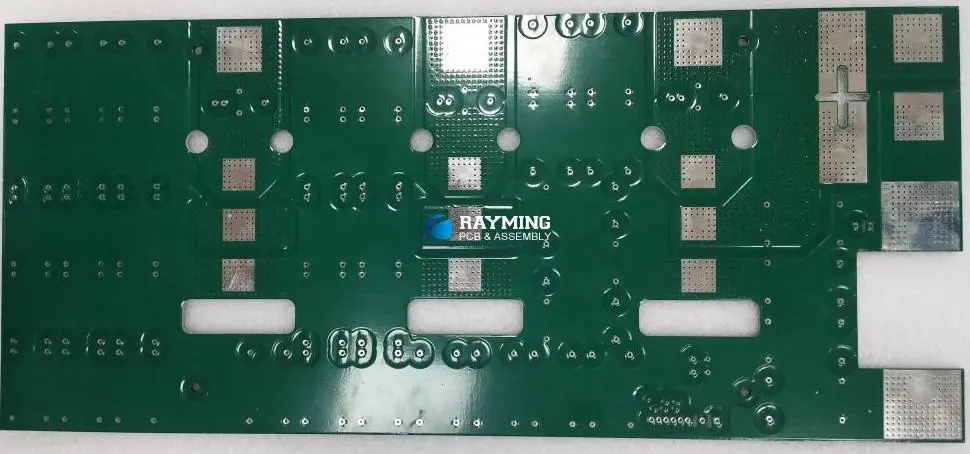
When to Choose Heavy Copper PCBs
Current Requirements
- Continuous currents exceeding 30A per trace
- Peak currents above 50A in switching applications
- Multiple high-current paths on single board
- Current density requirements >1A/mm²
Thermal Requirements
- Component junction temperatures >100°C
- Power dissipation >50W without external cooling
- Thermal cycling requirements exceeding standard limits
- Heat spreading requirements across large areas
Environmental Conditions
- Operating temperatures beyond standard PCB limits
- High-vibration or mechanical stress environments
- Extended operational life requirements (>10 years)
- Mission-critical applications where failure is not acceptable
Manufacturer Selection Criteria
Technical Capabilities
- Copper weight range capabilities (up to required thickness)
- Layer count capabilities for complex stackups
- Minimum feature size specifications
- Quality certifications (IPC Class 2/3, military standards)
Experience and Expertise
- Portfolio of similar applications
- Engineering support capabilities
- Problem-solving track record
- Customer references and case studies
Manufacturing Infrastructure
- Specialized equipment for heavy copper processing
- Quality control systems and testing capabilities
- Capacity for required production volumes
- Geographic location and logistics considerations
Future Trends
Technology Evolution
Extreme Copper Applications
- Push toward 30+ oz copper weights for specialized applications
- Integration with advanced substrate materials
- Hybrid flexible-rigid heavy copper designs
- 3D printed copper integration possibilities
Manufacturing Innovations
- Additive manufacturing techniques for copper deposition
- Advanced plating chemistries for improved uniformity
- Automated process control with AI/ML optimization
- Real-time quality monitoring and feedback systems
Market Drivers
Electric Vehicle Growth
- Increasing power requirements for faster charging
- Higher voltage systems requiring better thermal management
- Integration of power electronics in compact spaces
- Demand for lightweight, high-performance solutions
Renewable Energy Expansion
- Grid-scale energy storage systems
- High-efficiency power conversion requirements
- Harsh environment applications (offshore wind, desert solar)
- Distributed energy resource management
Industrial Automation
- Industry 4.0 driving higher power densities
- Robotic systems requiring precise control
- IoT devices with power management requirements
- Edge computing applications with thermal challenges
Emerging Applications
Advanced Computing
- High-performance computing thermal management
- Cryptocurrency mining equipment
- Edge AI processing units
- Quantum computing support systems
Medical Technology
- High-power medical imaging equipment
- Surgical robot power systems
- Portable medical device power management
- Life-critical monitoring systems
Aerospace Innovation
- Electric aircraft propulsion systems
- Satellite power distribution advancement
- Space exploration equipment
- High-altitude platform systems
Conclusion
Heavy copper PCB technology represents a critical advancement in printed circuit board design, enabling unprecedented current-carrying capacity and thermal management for demanding applications. As industries continue to push the boundaries of power density and performance requirements, heavy copper PCBs provide the foundation for next-generation electronic systems.
The key to successful heavy copper PCB implementation lies in understanding the unique design considerations, manufacturing challenges, and application requirements. By working closely with experienced manufacturers and following established design guidelines, engineers can leverage heavy copper technology to create robust, reliable, and high-performance electronic systems.
Whether you’re designing power electronics for electric vehicles, renewable energy systems, or industrial automation equipment, heavy copper PCBs offer the performance characteristics necessary to meet today’s demanding requirements while providing a pathway for future technological advancement.
The investment in heavy copper PCB technology pays dividends through improved reliability, enhanced performance, and simplified system design, making it an essential consideration for any high-power electronic application.

